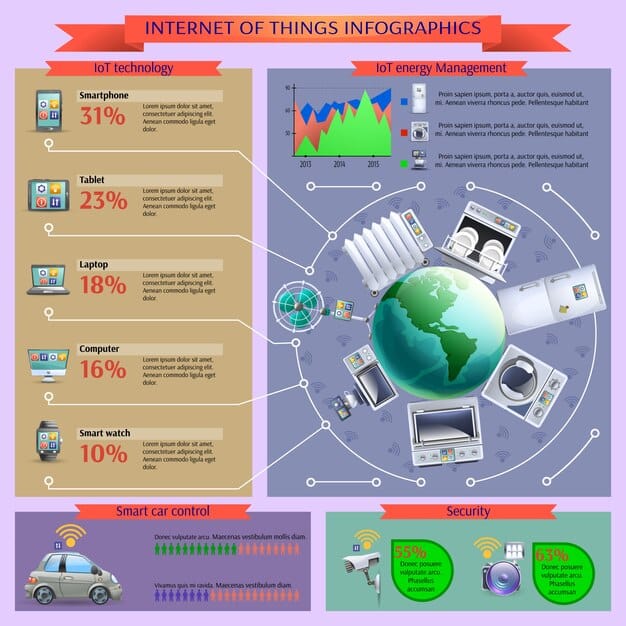US vs. European AI Ethics: Key Differences Unpacked

The approaches to AI ethics in the US and Europe diverge significantly, largely reflecting their foundational legal frameworks, societal values, and economic priorities, with Europe emphasizing a rights-based, precautionary approach while the US favors innovation-driven, sector-specific regulation.
As artificial intelligence rapidly reshapes our world, the ethical frameworks guiding its development and deployment become paramount. Understanding What Are the Key Differences Between US and European Approaches to AI Ethics? is crucial, as these distinctions profoundly impact innovation, regulation, and fundamental human rights on a global scale. This exploration delves into the divergent philosophies, regulatory initiatives, and societal priorities shaping AI ethics across the Atlantic.
Foundational Philosophies and Regulatory Impulses
The ethical landscapes for artificial intelligence in the United States and Europe are shaped by fundamentally different philosophical underpinnings and regulatory ambitions. While both regions acknowledge the transformative power and inherent risks of AI, their responses vary considerably, driven by distinct historical contexts, legal traditions, and societal values. Understanding these foundational differences is key to deciphering their respective approaches.
In Europe, the dominant philosophical approach to AI ethics is rooted in human rights and fundamental liberal democratic principles. The focus is on protecting the individual from potential harms of AI, ensuring fairness, transparency, and accountability above all else. This perspective is deeply influenced by the European Union’s strong history of data privacy regulations, such as the General Data Protection Regulation (GDPR), which serves as a significant precedent for AI governance. The EU’s strategy is often described as “precautionary,” meaning it seeks to identify and mitigate risks before widespread deployment. This outlook tends towards comprehensive, horizontal regulation that applies broadly across sectors, aiming for a unified, rights-centric framework that prioritizes trust and societal well-being.
* Human-Centric Approach: Prioritizing individual rights, well-being, and democratic values.
* Precautionary Principle: Emphasizing ex-ante regulation to prevent potential harms before they occur.
* Comprehensive Regulation: Seeking broad, consistent rules across various AI applications and sectors.
* Trust Building: Aiming to foster public trust in AI through robust ethical safeguards.
Conversely, the United States’ approach is often characterized by a more pragmatic, innovation-driven philosophy. There is a strong emphasis on fostering technological advancement and economic competitiveness, with a belief that excessive regulation could stifle innovation. The US tradition tends towards sector-specific, rather than horizontal, regulation, allowing individual industries to develop their own best practices and ethical guidelines. This “wait-and-see” or “light-touch” regulatory stance is often reactive, addressing issues as they emerge rather than preemptively. The underlying assumption is that market forces, coupled with existing legal frameworks in areas like consumer protection and civil rights, can largely address AI-related harms. This approach reflects a different balance between individual rights, economic freedom, and technological progress.
* Innovation-First Focus: Prioritizing technological advancement and economic growth.
* Sector-Specific Regulation: Developing rules tailored to particular industries or applications.
* Market-Driven Solutions: Relying on competition and existing laws to manage risks.
* Cooperative Governance: Encouraging partnerships between government and industry for best practices.
These differing philosophical starting points lead to distinct regulatory impulses. Europe often seeks to define clear “red lines” and prohibitions for high-risk AI systems, whereas the US tends to favor voluntary guidelines, industry best practices, and the adaptation of existing laws. Both regions grapple with the complex interplay between innovation, ethics, and governance, but their historical and cultural lenses provide unique perspectives on how to navigate this transformative era.
Regulatory Frameworks: GDPR’s Legacy and US Sectoral Focus
The distinct regulatory frameworks emerging in the US and Europe serve as the most palpable manifestation of their differing approaches to AI ethics. While both recognize the need for ethical AI, their legislative mechanisms and enforcement strategies diverge significantly, largely influenced by the precedent set by prior data protection laws and existing legal structures.
Europe’s proposed Artificial Intelligence Act (AI Act) stands as a landmark piece of legislation, symbolizing its comprehensive and top-down regulatory philosophy. Building upon the strong foundation of the GDPR, the AI Act employs a risk-based approach, categorizing AI systems into different risk levels – from “unacceptable risk” (leading to outright bans) to “high-risk” (subject to stringent requirements) and “limited/minimal risk” (with fewer obligations). The AI Act mandates requirements for high-risk AI, including data governance, transparency, human oversight, and conformity assessments. This overarching regulation aims to create a harmonized legal framework across all EU member states, fostering trust in AI while providing legal certainty for developers and deployers. The ambition is to create a global standard for ethical AI, much like the GDPR did for data privacy.
The GDPR’s influence on the AI Act is undeniable. The conceptual shift from a focus on data privacy to a broader framework encompassing AI ethics demonstrates Europe’s consistent commitment to fundamental rights and robust oversight. The GDPR’s principles of data minimization, purpose limitation, and accountability are mirrored in the AI Act’s requirements for high-risk systems, reinforcing a rights-centric approach. This legal continuity provides a powerful precedent for broad regulatory intervention.
* EU AI Act (Proposed):
* Risk-based classification with explicit prohibitions for unacceptable risks.
* Mandatory requirements for high-risk AI, including human oversight and transparency.
* Ex-ante (before deployment) conformity assessments and post-market monitoring.
* Strong influence from GDPR’s emphasis on fundamental rights and data protection.
In contrast, the United States has opted for a more fragmented and sector-specific approach. Rather than a single, overarching AI law, regulation often comes from adapting existing legislation – such as civil rights laws, consumer protection statutes, and sector-specific rules (e.g., in finance, healthcare, or transportation) – to address AI-related issues. For instance, the National Institute of Standards and Technology (NIST) has released an AI Risk Management Framework, which is voluntary and designed to help organizations manage the risks associated with AI. Similarly, the Biden Administration’s Executive Order on the Safe, Secure, and Trustworthy Development and Use of Artificial Intelligence emphasized agency-specific directives and standards development, rather than prescribing a singular legislative path.

The US model reflects a preference for regulatory flexibility, allowing different federal agencies and even state governments to address AI concerns within their specific purviews. This often results in a patchwork of regulations that can vary significantly from one industry to another. The argument for this approach is that it allows for nimble responses to rapidly evolving technology and avoids stifling innovation with overly prescriptive general rules. There is a strong emphasis on industry-led standards, voluntary codes of conduct, and public-private partnerships to guide responsible AI development. This divergence in regulatory philosophy—comprehensive vs. fragmented, preemptive vs. reactive—is one of the most critical differences defining transatlantic AI governance.
Ethical Principles: Rights-Based vs. Outcome-Oriented
Beyond the legislative frameworks, the underlying ethical principles guiding AI development and deployment present another significant point of divergence between the US and European approaches. While both regions share common aspirations for beneficial AI, their prioritization and interpretation of ethical concepts reflect their distinct societal values.
Europe’s ethical discourse is heavily centered on a rights-based approach. This means that AI ethics is viewed primarily through the lens of human rights and fundamental freedoms as enshrined in the EU Charter of Fundamental Rights. Principles such as non-discrimination, privacy, human dignity, and protection of vulnerable groups are paramount. The emphasis is on limiting the potential for AI systems to infringe upon these rights, focusing on the fairness and transparency of AI processes themselves. This strong rights-based perspective often leads to a precautionary stance, where the potential for harm to individual autonomy or privacy is weighed heavily against the benefits of AI. The goal is to ensure that AI serves humanity, rather than dominating or undermining it, and that individuals retain control over their data and their digital lives.
* Core Principles in Europe:
* Human Agency and Oversight: Ensuring humans remain in control of AI systems.
* Technical Robustness and Safety: Building reliable and secure AI.
* Privacy and Data Governance: Strong protections for personal data.
* Transparency: Making AI systems understandable and explainable.
* Diversity, Non-discrimination, and Fairness: Preventing bias and ensuring equitable outcomes.
* Societal and Environmental Well-being: Considering broader impacts.
* Accountability: Establishing responsibility for AI system outcomes.
The United States, while certainly concerned with individual rights, tends to adopt a more outcome-oriented or principle-based approach that blends ethical considerations with practical considerations of innovation and utility. The focus is often on ensuring that AI systems lead to desirable societal outcomes, such as economic growth, national security, and improved public services, while mitigating adverse impacts. Rather than strict prohibitions based on abstract rights, the US approach often considers whether the *application* of an AI system leads to unfairness, bias, or other harms in practice, and then seeks remedies for those specific outcomes. This pragmatic stance sometimes places greater emphasis on finding solutions through technological means or market mechanisms, rather than through prescriptive legal frameworks alone. There’s a stronger willingness to iterate and learn from deployment, adapting policies as needed.
* Core Principles in USA (often within frameworks like NIST RMF):
* Safety and Security: Ensuring reliable and resilient AI systems.
* Bias Mitigation and Fairness: Actively working to reduce and prevent discriminatory outcomes.
* Explainability and Interpretability: Understanding how AI systems reach decisions.
* Privacy and Data Protection: Protecting sensitive information.
* Transparency and Traceability: Providing insight into AI system operation.
* Responsibility and Accountability: Assigning clear lines of responsibility.
* Respect for Human Values: Ensuring AI aligns with democratic values.
The practical implication of these differing core principles is seen in how each region addresses issues like algorithmic bias or AI-driven surveillance. Europe is more likely to propose outright bans or highly restrictive rules for AI systems deemed to infringe on fundamental rights, while the US might focus on developing tools for bias detection and mitigation, or on establishing guidelines for responsible use within specific contexts. These distinct ethical lenses shape policymaking and public discourse, leading to varied public perceptions and expectations regarding the role of AI in society.
Transparency and Explainability: Interpretive Paradigms
The concepts of transparency and explainability in AI are critical for fostering trust, ensuring accountability, and enabling effective oversight. However, the interpretation and implementation of these principles differ notably between the US and European approaches to AI ethics, reflecting their broader philosophical differences.
In Europe, the emphasis on transparency is deeply intertwined with the GDPR’s “right to explanation” and the AI Act’s focus on high-risk systems. For the EU, transparency often implies a need for AI systems to be understandable and their decisions explainable to affected individuals. This can mean understanding the logic behind an AI decision, the data used, and the methods employed. The goal is to empower individuals to challenge AI-driven outcomes and to ensure that algorithmic decision-making aligns with principles of fairness and non-discrimination. The expectation is that if an AI system affects a person’s rights or opportunities, that person should have a meaningful way to comprehend how the decision was reached. This pushes for technical and procedural transparency from design to deployment, including documentation requirements for high-risk AI systems.
This drive for explainability in Europe often extends to technical specifications and model cards, requiring developers to clearly document the training data, model limitations, and intended use cases. The aim is to make the “black box” of AI more legible to regulators, auditors, and the public. The EU’s robust framework seeks to mandate a level of transparency that allows for external scrutiny and ensures compliance with ethical guidelines and human rights standards.
* European Transparency Focus:
* Right to Explanation: Empowering individuals to understand and challenge AI decisions.
* Technical Explainability: Demanding insight into model logic, data, and methodology.
* Mandatory Documentation: Requiring detailed information on high-risk AI systems for audit and oversight.
* Legal Recourse: Enabling individuals to seek remedies against opaque or biased AI.
The United States, while also valuing transparency, tends to approach it with a more pragmatic and often less prescriptive stance. The focus is frequently on “interpretability” – making AI systems understandable enough for human users to predict their behavior and for experts to diagnose errors or biases. Instead of a universal “right to explanation,” the US often seeks context-specific transparency, where the level of explanation required depends on the risk and application of the AI system. For example, an AI system used in healthcare might require a higher degree of interpretability than one used for recommending movies. The emphasis is often on practical utility and ensuring that AI can be safely and effectively deployed, rather than on providing a full technical breakdown for every individual affected.
There is a significant push for industry-led best practices and the development of tools to enhance AI interpretability, such as explainable AI (XAI) techniques. Corporations are encouraged to develop their own transparent practices, often driven by consumer trust or competitive advantage, rather than strict legal mandates. The US approach recognizes the trade-offs between full transparency and proprietary information, computational complexity, and the practical feasibility of explaining highly complex AI models. Consequently, transparency is seen as a means to an end – ensuring beneficial and non-discriminatory outcomes – rather than an end in itself as a fundamental right.
* US Transparency Focus:
* Context-Specific Interpretability: Level of explanation adapted to application and risk.
* Practical Utility: Prioritizing understanding for safe and effective deployment.
* Industry Best Practices: Encouraging development of XAI tools and voluntary transparency.
* Proprietary Considerations: Balancing transparency with trade secrets and innovation.
These differing perspectives on transparency and explainability reflect broader national priorities. Europe’s emphasis on individual rights and comprehensive regulation drives a demand for deep, legally mandated transparency. The US, with its innovation-centric and market-driven ethos, prioritizes functional interpretability and flexible guidelines, allowing industry to lead in developing solutions.
Data Governance and Privacy: Precedent and Practice
The distinct approaches to data governance and privacy form a significant bedrock for the differing AI ethics stances of the US and Europe. Europe’s pioneering role with the GDPR has set a global benchmark, profoundly influencing its subsequent approach to AI, while the US operates with a more fragmented, sector-specific privacy landscape that impacts its perspective on AI ethics.
Europe’s robust data protection regime, epitomized by the General Data Protection Regulation (GDPR), is perhaps the most influential factor shaping its AI ethics. The GDPR enshrines principles like data minimization, purpose limitation, accuracy, storage limitation, integrity, confidentiality, and accountability. It grants individuals extensive rights over their personal data, including the right of access, rectification, erasure (“right to be forgotten”), and data portability. Crucially, the GDPR introduced strict rules on automated individual decision-making, including profiling, requiring human intervention in certain high-stakes scenarios and providing individuals the right to obtain an explanation for solely automated decisions impacting them significantly. This comprehensive framework means that any AI system developed or deployed within the EU must inherently comply with these stringent data privacy standards. The European AI Act further builds upon this, integrating GDPR principles directly into its requirements for data governance in high-risk AI systems, ensuring that ethical AI is synonymous with privacy-preserving AI.
The European approach views data privacy not merely as a matter of consumer protection, but as a fundamental human right. This holistic perspective naturally extends to AI systems, demanding that AI development respects data subject rights throughout the entire lifecycle of an AI model, from training data collection to deployment and monitoring. The legal obligation to ensure privacy by design and by default is a powerful tool for embedding ethical considerations directly into AI innovation.
* European Data Governance & Privacy:
* GDPR as Core: Mandatory, comprehensive framework for personal data.
* Fundamental Right: Privacy seen as a human right, not just a consumer right.
* Automated Decision-Making Rules: Specific provisions for AI-driven decisions.
* Privacy by Design: Embedding privacy from the outset in AI development.
In contrast, the United States lacks a single, comprehensive federal data privacy law comparable to the GDPR. Instead, its privacy landscape is characterized by a patchwork of federal and state-level laws, often sector-specific. Examples include the Health Insurance Portability and Accountability Act (HIPAA) for healthcare data, the Children’s Online Privacy Protection Act (COPPA) for children’s data, and various state laws like the California Consumer Privacy Act (CCPA) and its progeny (CPRA, CPA, VCDPA etc.). While these laws provide significant protections in specific domains, they do not offer a unified framework that universally applies across all data types and industries. This leads to a more flexible, but also potentially more fragmented, approach to data privacy in the context of AI.
The US typically frames privacy as a consumer right or a property right, allowing for more market-driven solutions and less prescriptive regulatory mandates compared to Europe. The focus for AI development often shifts to de-identification techniques, anonymization, and contractual agreements to manage data privacy, rather than relying on a robust overriding regulatory statute. While there’s growing momentum for a federal privacy law, and states are increasingly active, the current environment means that AI developers in the US must navigate a complex web of varying privacy obligations. This decentralized approach allows for greater experimentation with data-intensive AI models but also places a greater burden on industry to self-regulate and ensure responsible data practices. The absence of a “GDPR-like” unified privacy law inevitably shapes how AI is developed and deployed, often prioritizing data access for innovation while still addressing specific privacy harms as they arise.

These divergent approaches to data governance and privacy are not superficial; they penetrate to the core of how AI is conceptualized and governed. Europe’s firm stance on data rights provides a robust, pre-defined ethical boundary for AI, whereas the US’s more adaptive, piecemeal approach leaves more room for industry interpretation and the balancing of differing priorities.
Innovation vs. Control: Balancing Act
The tension between fostering innovation and implementing robust control mechanisms stands as a central axis around which US and European approaches to AI ethics revolve. Both regions desire beneficial AI, but their willingness to prioritize one over the other, and their chosen methods for achieving balance, starkly differentiate them.
Europe’s strategy is often characterized by a greater emphasis on control and the preemptive mitigation of risks. The argument is that while innovation is vital, it should not come at the expense of fundamental rights, democratic values, or societal well-being. The EU’s AI Act, with its detailed requirements for high-risk systems, conformity assessments, and “unacceptable risk” prohibitions, reflects a deliberate choice to ensure safety and ethical alignment *before* widespread deployment. This precautionary principle, while potentially slowing down AI development in certain areas, aims to build public trust and ensure that AI serves society responsibly. The “Brussels Effect” is envisioned here: by setting high regulatory standards, the EU hopes to compel global companies to adopt those standards worldwide to access the lucrative European market, thereby exporting its ethical framework. The inherent belief is that responsible innovation is sustainable innovation, achieved by embedding controls from the outset.
This approach is rooted in a historical context where past technological advancements sometimes outpaced regulation, leading to unforeseen societal challenges. Europe aims to learn from these experiences by proactively shaping the technological frontier. The focus on establishing clear legal certainty and a single market for AI, albeit with stringent rules, is intended to provide a predictable environment for companies willing to adhere to high ethical standards.
* European Priority:
* Control and Safety First: Prioritizing risk mitigation and fundamental rights.
* Precautionary Principle: Acting to prevent potential harms proactively.
* Trust-Building through Regulation: Aiming to foster public confidence in AI via strict rules.
* Global Standard-Setting: Seeking to influence international norms through strong domestic regulation.
The United States, by contrast, generally places a higher premium on fostering rapid innovation and minimizing regulatory burdens that could hinder technological progress. The prevailing view is that over-regulation can stifle creativity, reduce competitiveness, and potentially drive AI development to other parts of the world. The US prefers a more flexible, market-driven approach, believing that innovation can best thrive in an environment where entrepreneurs and researchers have the freedom to experiment and iterate quickly. Regulation tends to be reactive, emerging mainly when significant harms become evident, or when existing laws are clearly inadequate.
This “innovation-first” mindset is often accompanied by the belief that many ethical issues can be addressed through voluntary industry standards, self-regulation, and public-private partnerships. The US strategy focuses on driving technological leadership and economic benefits, trusting that ethical considerations can largely be managed through adaptable frameworks and ex-post accountability. The speed of AI development is seen as a competitive advantage, and policies are designed to maintain this pace. While acknowledging risks, the US typically seeks less prescriptive solutions, encouraging responsible behavior through incentives and collaborations rather than through comprehensive legal mandates that could slow down development.
* US Priority:
* Innovation and Growth First: Prioritizing speed of development and economic competitiveness.
* Reactive Regulation: Addressing harms as they emerge, rather than preemptively.
* Flexibility and Adaptation: Allowing for rapid technological evolution and market-led solutions.
* Industry-Led Standards: Encouraging self-regulation and voluntary best practices.
The ongoing dialogue between these two philosophies highlights a core challenge in governing AI: how to harness its immense potential while safeguarding against its risks. Europe leans towards a protective stance, willing to trade some speed for greater control and rights protection. The US opts for an agile, innovation-centric approach, banking on market forces and adaptive governance to steer AI towards beneficial outcomes. This fundamental philosophical divergence continues to shape the future of global AI ethics.
Global Influence and International Alignment
The distinct approaches of the US and Europe to AI ethics inevitably ripple across the globe, shaping international discussions, competitive landscapes, and the aspirations for global AI governance. Both regions seek to exert influence, but their pathways to achieving it are as different as their domestic strategies.
Europe actively seeks to position itself as a global leader in ethical AI, aiming to establish a “third way” between the state-controlled AI models (often seen in China) and the less regulated, market-driven models (often associated with the US). By developing the comprehensive AI Act, the EU is attempting to create a “Brussels Effect” for AI, similar to how GDPR has become a de facto global standard for data privacy. The ambition is that companies operating in the EU, regardless of their origin, will adopt these high ethical standards globally to ensure seamless access to the lucrative European market. This strategy emphasizes multilateral cooperation, engaging with international bodies like the OECD, UNESCO, and the Council of Europe to promote its values-based approach and foster a global consensus around human-centric AI. Europe advocates for international agreements that prioritize human rights, democratic principles, and responsible governance, aiming to create a level playing field based on shared ethical commitments. Its influence often manifests through its legislative leadership and its role in shaping international norms and standards.
* European Global Influence:
* “Brussels Effect” Strategy: Exporting its AI Act standards globally through market access.
* Values-Based Diplomacy: Advocating for human rights and democratic principles in international AI discussions.
* Multilateral Engagement: Active participation in global bodies to foster consensus.
* Standard-Setting: Aiming to be the global benchmark for ethical AI governance.
The United States, while also seeking to influence global AI norms, often does so through a combination of technological leadership, economic incentives, and bilateral partnerships. While less inclined to pursue comprehensive international treaties or regulations focused purely on ethics, the US promotes its vision of “responsible AI development” through collaborative initiatives, defense alliances, and technical cooperation agreements. It focuses on fostering innovation and developing advanced AI capabilities that align with democratic values, often framing AI and its governance within the broader context of geopolitical competition. The US tends to champion voluntary standards, interoperability, and the sharing of best practices derived from its own industry leaders. Its influence is often driven by the commercial success of its tech giants and its military applications of AI, which set de facto technical and operational standards.
The US approach to global alignment is often less about imposing a single regulatory model and more about fostering a diverse ecosystem of AI development that respects specific national contexts, while still upholding core democratic values. It seeks to ensure that critical AI technologies are developed and deployed by like-minded nations, focusing on resilience, security, and trust within alliances. The US typically prefers to lead by example through its technological prowess and economic power, rather than through extensive legislative frameworks designed for global replication.
* US Global Influence:
* Innovation Leadership: Influencing norms through advanced technological development and commercial success.
* Bilateral & Alliance-Based Cooperation: Partnering with key allies on AI research and responsible use.
* Voluntary Standards & Best Practices: Promoting industry-led guidelines over international treaties.
* Geopolitical Framing: Integrating AI governance into broader national security and economic competitiveness strategies.
Despite their differences, both the US and Europe recognize the imperative of international cooperation on AI. Issues like algorithmic bias, data flows, and autonomous weapons systems transcend national borders, demanding a degree of coordination. The challenge lies in harmonizing these deeply embedded philosophical and practical differences to forge effective global solutions for AI ethics. The continued dialogue and occasional friction between these two powerful blocs will undeniably shape the trajectory of global AI governance for decades to come.
| Key Point | Brief Description |
|---|---|
| 🇪🇺 Philosophical Basis | Europe: Human rights-centered, precautionary, ex-ante regulation. |
| 🇺🇸 Regulatory Style | US: Innovation-driven, sector-specific, ex-post solutions. |
| ⚖️ Data Privacy | Europe: GDPR-based, fundamental right; US: Patchwork, consumer right. |
| 🌍 Global Influence | Europe: “Brussels Effect,” multilateral; US: Tech leadership, bilateral. |
Frequently Asked Questions About US and EU AI Ethics
The EU AI Act is a comprehensive, horizontal regulation that categorizes AI systems by risk, imposing strict requirements on high-risk applications, reflecting a precautionary, rights-based approach. US AI policy, conversely, is more fragmented, relying on existing laws, sector-specific guidance, and voluntary frameworks to foster innovation while addressing emerging harms on an ex-post basis.
The GDPR profoundly influences the EU’s AI ethics by establishing a robust framework for personal data protection as a fundamental right. Its principles of data minimization, purpose limitation, and accountability are mirrored in the AI Act, ensuring that AI systems developed or deployed in the EU must comply with stringent privacy standards and respect individual rights, particularly concerning automated decision-making.
The US favors a sector-specific approach to AI regulation largely to promote innovation and avoid stifling technological progress with broad, prescriptive laws. This allows for tailored rules that address particular industry challenges and risks, leveraging existing legal frameworks in areas like healthcare, finance, and consumer protection. It reflects a belief in regulatory flexibility and market-driven solutions.
Both the US and European approaches value explainability, but with different interpretations. Europe emphasizes a “right to explanation” for individuals affected by AI, pushing for deeper technical transparency and human oversight. The US focuses more on “interpretability” for practical use, ensuring AI systems are understandable enough for experts to diagnose errors and for safe deployment within specific contexts, often through industry best practices.
These differences create a complex global landscape. Europe seeks to set global standards through legislative leadership (the “Brussels Effect”), while the US influences through technological innovation and bilateral partnerships with like-minded nations. This leads to varying compliance burdens for international companies and ongoing debates about the harmonization of global AI ethics, shaping the future of international AI governance.
Conclusion
The divergent paths taken by the United States and Europe in shaping AI ethics illuminate fundamental differences in their societal values, legal traditions, and economic priorities. While both recognize the ethical imperative in AI development, Europe gravitates towards a comprehensive, rights-based, and precautionary regulatory framework, seeking to proactively mitigate risks and build trust through stringent oversight. The US, in contrast, adopts a more adaptive, innovation-driven approach, favoring sector-specific guidelines, voluntary standards, and reactive intervention to foster technological leadership and allow market forces to guide development. These distinctions underscore a broader philosophical debate on the ideal balance between rapid technological progress and robust ethical safeguards. As AI continues to evolve, the ongoing transatlantic dialogue and the interplay of these distinct approaches will undoubtedly shape the global trajectory of artificial intelligence, influencing its ethical trajectory for generations to come.





